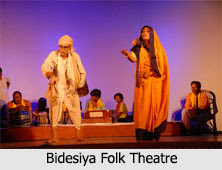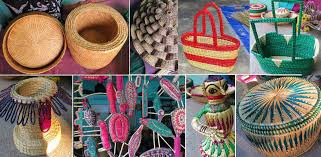Folk dances of Bihar

The 8 popular forms of folk dances of Bihar 1. Bidesia: The dances of Bhikhari Thakur, popularly known as Bidesia nach, have for their themes satire on some aspects of the social evils like child marriage, dowry system etc. Elements of drama too were introduced in the dance in as much as the songs have dialogues divided by wits and epigrams. In Bidesia, the female roles are played by the male actor-dancers. Normally, they wear dhoti or shirt trousers and for the appearance in case of female roles, they are artificial long haired for the same. Though many new means of communication and entertainment are developed recently, Bedesia remains the most popular and refreshing relaxation for the Bhojpuris. 2. Jat-Jatin Dance : Theme of the Jat-Jatin dance of Bihar explains the story of the lovers Jat-Jatin, who were separated and living in difficult situations The Jata-Jatin dance has for its theme songs invoking rains. It is also ...




